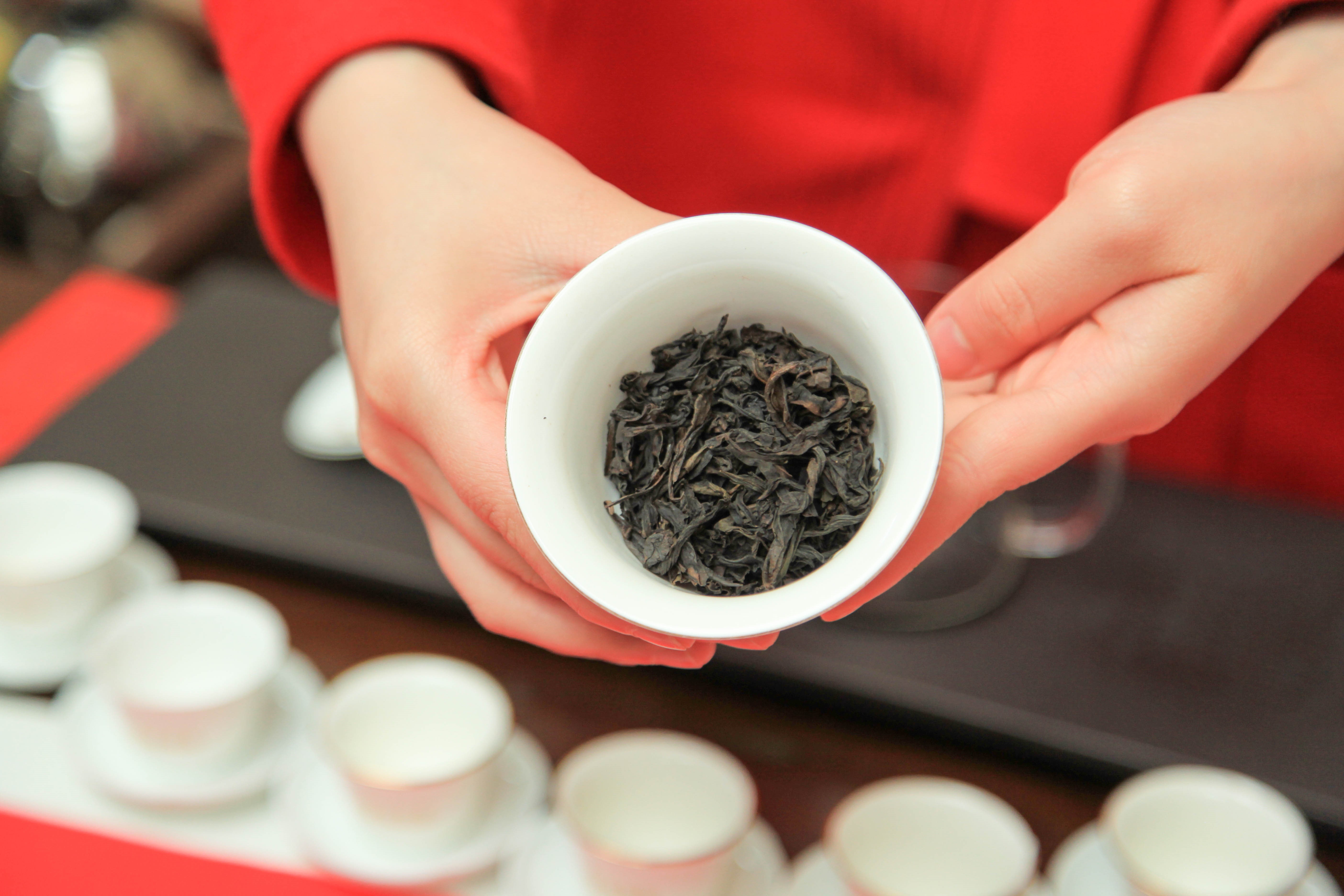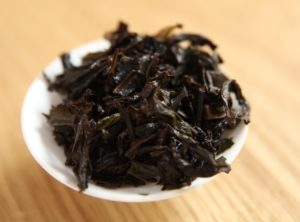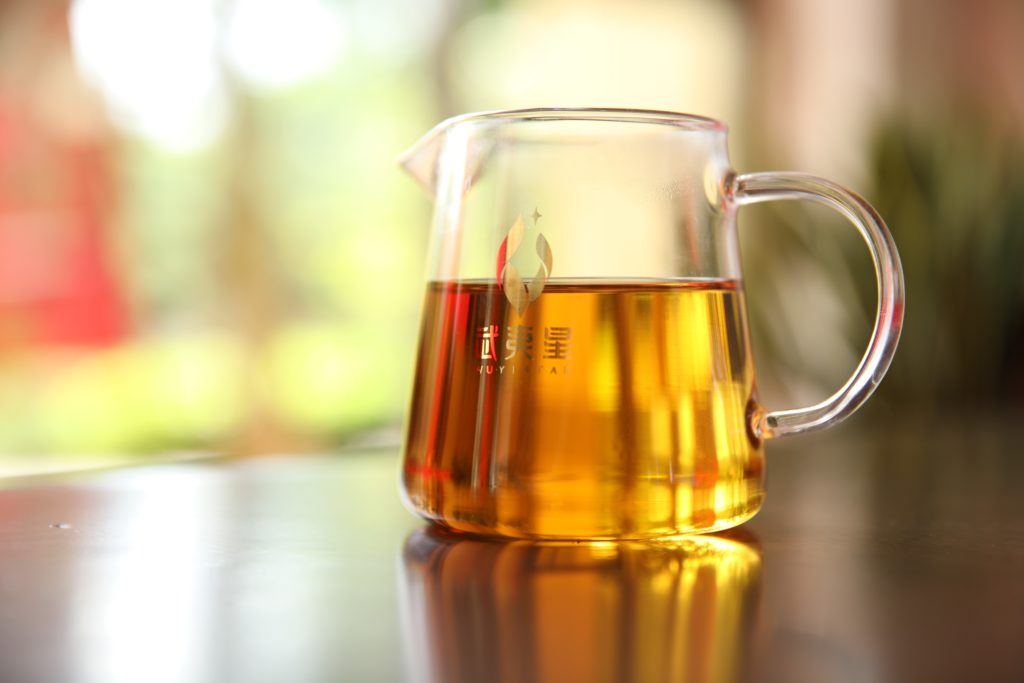
Background
Yellow Goddess of Mercy, also simply known as 105, is a relatively new oolong tea from Mount Wuyi in China’s Fujian Province. It was officially introduced in 2003 after 20 years of hybrid experimentation. A creation of the Fujian Tea Research Institute, it is a cross of the famous Iron Goddess of Mercy (Tie Guan Yin) and the not-so-famous Yellow Dawn (Huang Dan). The Yellow Goddess of Mercy varietal yields 30% to 50% more leaf than its parents and is suitable for making oolong teas, green teas and black teas (called red teas in China).

Because the Yellow Goddess of Mercy leaf is thin, it is only roasted at light to medium strength. The character of the tea is hard to pin down, as the flavors change from brew to brew, but overall it can be described as having a creamy, spicy and sweet profile.
Wuyi rock teas can sometimes be a bit overpowering for the uninitiated due to the strong mineral and earthy flavors. For this reason, Yellow Goddess of Mercy counts as a good introduction to Wuyi rock teas due to its sweetness. In fact an even better introduction to Wuyi rock teas is a mix of Yellow Dawn and Yellow Goddess of Mercy. Whilst it is considered sacrilegious amongst tea connoisseurs to mix tea varietals, combining these two teas results in a final product that is doubly sweet.
Brewing Instructions
The ideal brewing method for Yellow Goddess of Mercy is 5 grams of tea leaves to 100 milliliters of water at 100 Celsius. The first brew should be around 20 seconds, adding an extra 10 seconds to each subsequent brew. It can be infused about 8 times.
Taste and Aroma
The dry leaf of Yellow Goddess of Mercy is long, thick and twisted. It is charcoal black in color, with specks of brown and green. The dry leaf aroma is light, with hints of caramel, malt, roasted coconut, coffee and honey.
After the leaves have been brewed, an olive-green color comes through in the leaves. The wet leaves smell earthy, as well as having a scent of milk and honey, which is more pronounced when smelling the teapot lid.
The liquor is a light yellow on the first steeping and doesn’t have a very strong aroma at this stage. The first brew possesses a particularly delicious flavor, which must be savored, as it turns out to be the best of all the brews. The first steeping has a light taste, which could be described as being at the mid-way point of green tea and red tea, in addition to having floral notes, and a creamy aftertaste.

On the second steeping, the liquor becomes more golden and begins to smell sweet. The flavor is similar to the first infusion, except that some astringency creeps in that creates a tightness in the mouth, taking away from the perfection of the first brew.
The third steeping is notably astringent, and the floral notes are replaced with hints of cinnamon and orange. The creamy aftertaste disappears and is replaced with a slightly sweet honeysuckle aftertaste. The aftertaste lingers for several minutes, becoming more and more pleasant with time. This lingering aftertaste is a notable feature in the fourth and fifth steepings as well.
On the fourth steeping, the liquor develops a spicy character, still retaining the tastes of cinnamon and orange, but also tasting of pepper and all-spice.
The fifth steeping is slightly weaker, but the creamy aftertaste comes back, accompanying the sweet aftertaste, which is now much more pronounced.
On the sixth steeping, the creaminess disappears again, and the spicy character becomes more notable.
The flavor profiles of the seventh and eighth steepings become weaker, but the sweet honeysuckle aftertaste becomes stronger and continues to linger well after your final sip.
Acknowledgements:
Thanks to Caroline Hao of Wuyi Star for providing the Yellow Goddess of Mercy tea samples and photographs, and thanks to Daniel Hong of Hong China Tea for providing background information for this article.
Jaq:
It might be useful to American readers to state that “red tea” is the translation from Chinese for what we call “black tea”. Of course, black tea or dark tea mean Hei Cha or Puer when translated back for Chinese tea-lovers.
Bill
Hi Bill. Thanks for your comment. I’ve made the clarification.
Yancha is a perfect example of the diversity of the oolong category. Higher oxidation and a charcoal roast give the tea a deeper, darker taste than what you might expect. They can still offer surprising floral notes and great complexity underneath all of that.